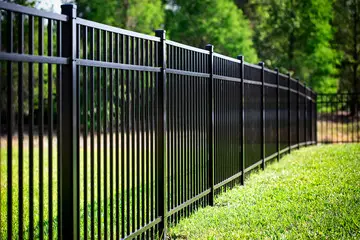A sluggish computer can be a source of frustration, impacting productivity and turning even the simplest tasks into time-consuming endeavors. Thankfully, there are a variety of strategies you can employ to breathe new life into your device. By applying these PC speed enhancement tips, you can significantly improve your computer’s performance and ensure it runs smoothly.
1. Clear Out the Digital Clutter
One of the most straightforward ways to enhance your computer’s speed is by decluttering your storage. Over time, unused files, temporary data, and redundant applications accumulate, taking up valuable space and slowing down system operations. Start by deleting files you no longer need, and don’t forget to empty the recycle bin afterward. Organize your remaining files into appropriate folders, making them easier to locate and reducing the load on your computer’s indexing processes.
Consider using built-in tools or third-party software to perform a deep clean of your storage. Such tools can help remove unnecessary files, cached data, and unwanted applications. By minimizing digital clutter, you allow your computer to run more efficiently, directly impacting system performance boosting.
2. Manage Startup Programs
Many applications automatically configure themselves to start whenever your computer is powered on. While this may seem convenient, too many startup programs can drastically slow down boot times. To rectify this, access your task manager or system preferences and review the list of startup programs. Disable any that are non-essential or rarely used.
Streamlining startup processes ensures that your computer uses its resources efficiently right from the start. The fewer programs it has to launch on startup, the quicker it can get up to speed, providing a more responsive experience right away. Implementing this fast computer setup guide is an easy way to ensure a swifter, more agile computing experience.
3. Keep Your Software Updated
Outdated software can often lead to compatibility issues, glitches, and security vulnerabilities that may affect performance. Regularly check for updates for your operating system, drivers, and applications. Updates frequently contain optimizations, bug fixes, and enhancements that can improve overall system performance.
Enable automatic updates where possible, or set a reminder to manually check for updates on a weekly basis. Keeping your software current ensures that your computer is running the latest versions, which are often designed for improved efficiency and speed.
4. Optimize Your Hardware for Better Performance
When software tweaks are not enough, it’s time to look at hardware improvements. Consider upgrading your hard drive to a solid-state drive (SSD) for a noticeable boost in speed. SSDs are significantly faster than traditional hard drives, which can improve boot times, reduce load times for applications, and speed up file transfers.
Another key component to consider is your computer’s RAM (random-access memory). If your computer often feels sluggish or becomes unresponsive when running multiple programs, it might benefit from a RAM upgrade. Increasing your RAM allows your computer to handle more tasks simultaneously, improving multitasking performance and making the system feel more responsive.
Investing in an SSD or adding more RAM is one of the most effective optimize hardware for speed methods you can adopt. These upgrades can transform an aging computer into a high-speed machine capable of handling modern demands.
5. Regularly Defragment Your Hard Drive
If you are still using a traditional hard drive, regular defragmentation can help organize data more efficiently. Over time, files on your hard drive can become fragmented, meaning parts of the files are stored in different locations. This fragmentation can slow down data retrieval, leading to a slower overall system performance.
Defragmentation rearranges the data on your drive so that related pieces are stored closer together, speeding up read and write times. Most operating systems have built-in defragmentation tools that can be scheduled to run automatically, ensuring your hard drive remains optimized.
6. Adjust Visual Effects for Better Speed
While visually appealing, graphical effects and animations can consume significant system resources. If you are looking to maximize performance, consider disabling or reducing these effects. On Windows, you can do this by navigating to the “Performance Options” menu and selecting “Adjust for best performance.” On a Mac, reducing transparency and motion in the “Accessibility” settings can also help.
By minimizing visual effects, you redirect more of your computer’s processing power towards tasks that matter, providing a quicker and more streamlined user experience.
7. Use a High-Performance Power Plan
Many computers, especially laptops, have power-saving modes that limit performance to conserve battery life. If you frequently notice sluggishness, check your power settings. Switch to a high-performance power plan to prioritize speed over battery conservation. This simple tweak can make a notable difference, especially when handling resource-intensive tasks such as video editing or gaming.
8. Conduct Regular System Maintenance
Routine maintenance is critical to sustaining a fast computer over the long term. Schedule regular checkups to run antivirus scans, remove malware, clean the registry, and defragment your hard drive if necessary. These actions will help keep your system running smoothly and prevent small issues from turning into larger problems.
Conclusion
By incorporating these PC speed enhancement tips, adopting a proactive approach to system performance boosting, and following a fast computer setup guide, you can ensure your computer stays in top shape. Remember to regularly optimize hardware for speed through essential upgrades and maintenance. With a bit of care and the right strategy, your computer can perform at its best, keeping you productive and frustration-free.




